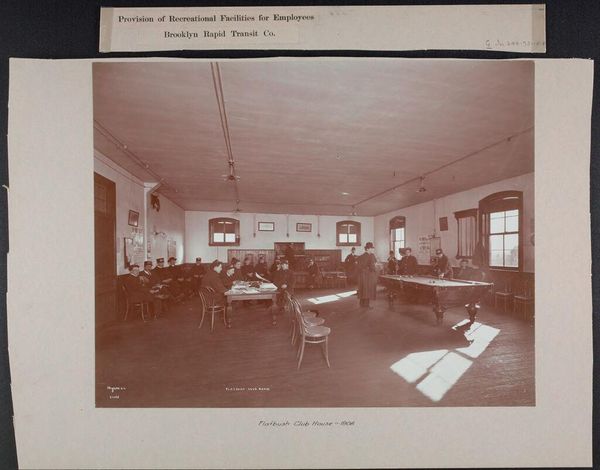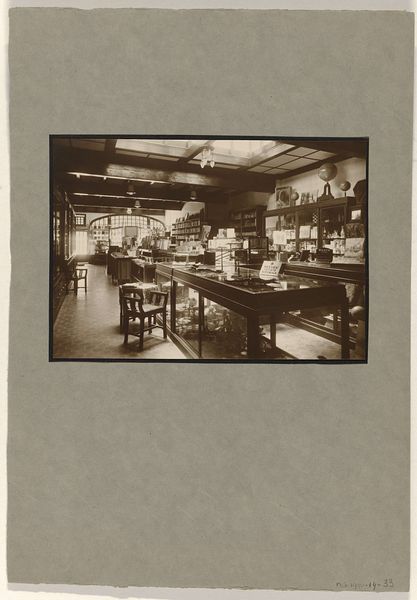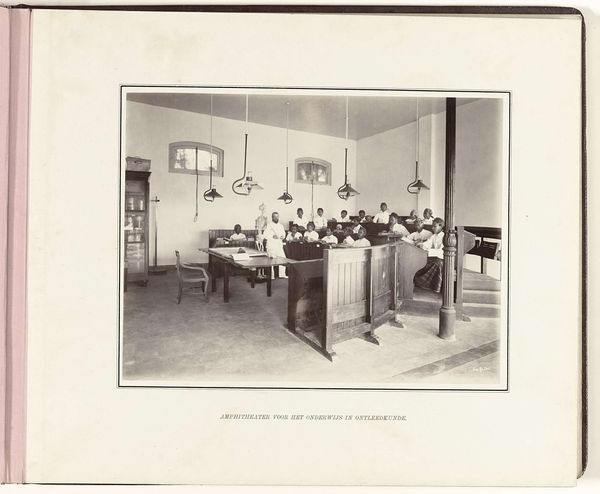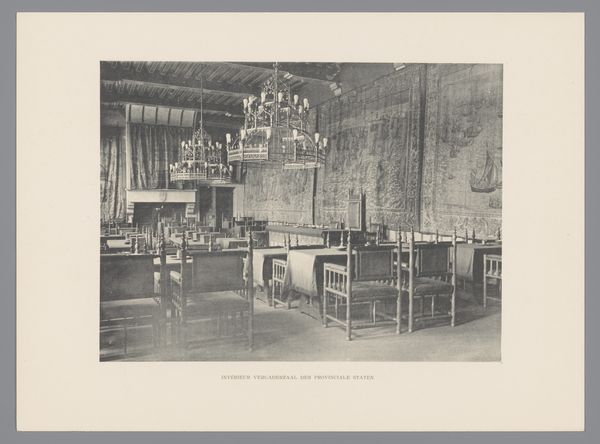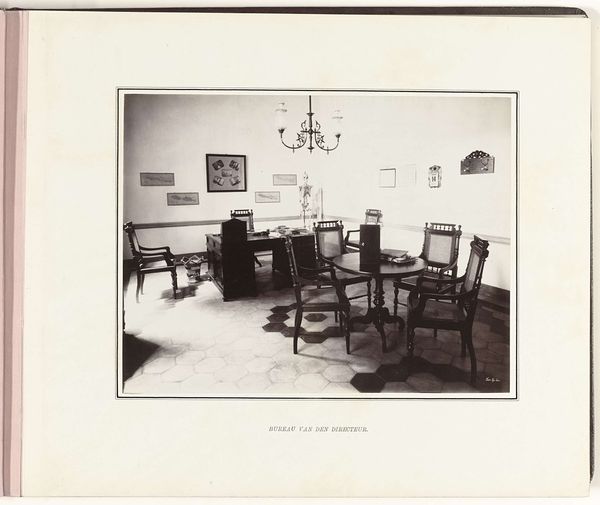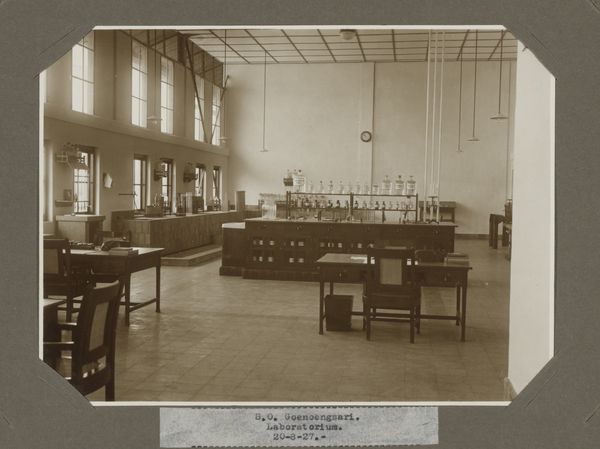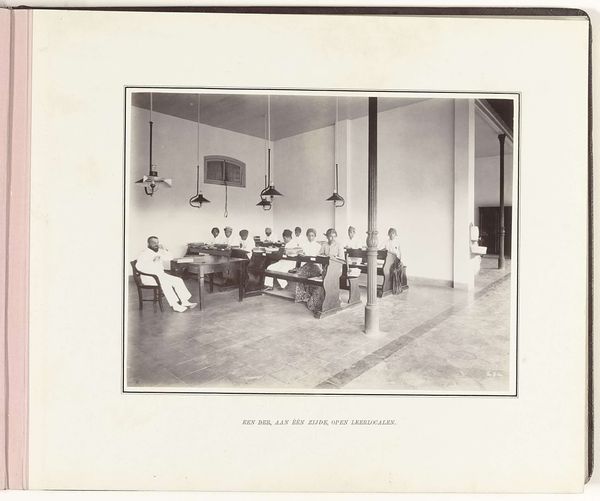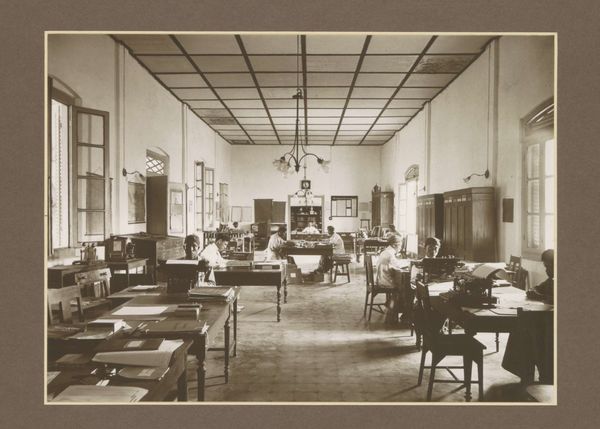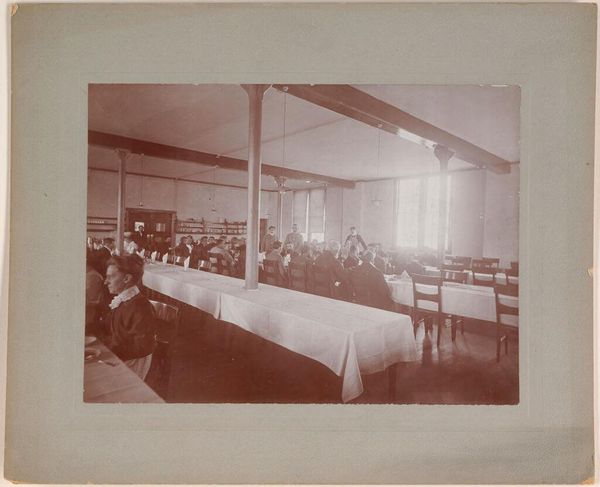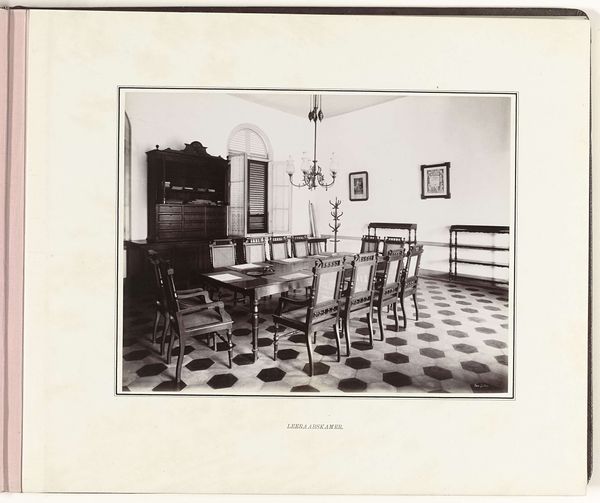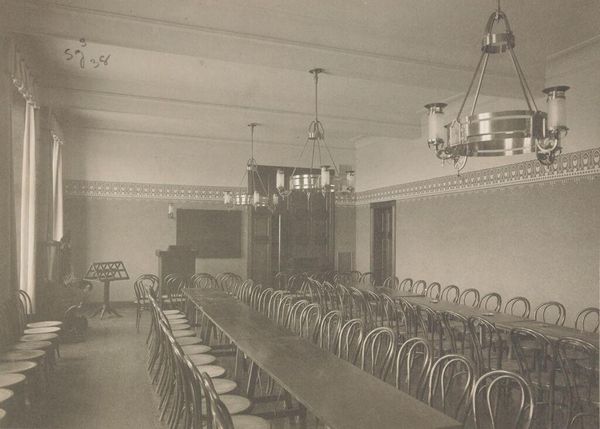
photography
#
still-life-photography
#
photography
#
realism
Dimensions: height 188 mm, width 245 mm
Copyright: Rijks Museum: Open Domain
Curator: Let's consider this intriguing image titled "Recreatiezaal," taken around 1902 by Tan Tjie Lan. It’s a photographic study of what appears to be a recreation room. What’s your initial reaction to the piece? Editor: It’s incredibly still…almost eerily so. Like a ghost caught mid-game. The light reflects strangely on the tiled floor, creating an otherworldly effect, and for a recreational space, it lacks life. There's a sense of waiting, of expectation unfulfilled. Curator: I see that. There is a tension. The recreation hall depicted seems very formal. If you look at the architecture, you will observe this. In Dutch colonial contexts, social spaces for recreation or recuperation played an important role in the hierarchies that emerged there. The precise framing suggests more of a documentary impulse than a truly “recreational” feel. Editor: The rigidity is so evident. And is it just me, or does the emptiness amplify that? Each chair is neatly arranged; it's so orderly it could be staged. It almost seems less like a lived-in room, and more like a set piece, the opening scene in some melancholic play. Curator: That interpretation isn't unfounded. Photography then often functioned within colonial projects—mapping, surveying, documenting not only territories but also behaviors and rituals. Who was invited to these places of 'recreation'? These settings were tools for creating specific social conditions that upheld a power structure. Editor: Power struggles are certainly visible when you study the rigid symmetry. The tables neatly aligned as if arranged for inspection... It really brings up that sense of imposed order over natural interaction, a space regulated more than enjoyed. Like a metaphor for social engineering caught in silver halide. What lingers is the silence—a testament, maybe, to unspoken control. Curator: Exactly. Looking at "Recreatiezaal," we confront the complex legacy of Dutch colonial Indonesia. It provides critical insight into how leisure, race, and class became intertwined under colonialism, offering us a stark look into the curated landscape of a bygone social order. Editor: Leaving me haunted, though in an interesting way. You know, I love those works that continue to engage you long after you move away, like lingering spirits in a quiet room.
Comments
No comments
Be the first to comment and join the conversation on the ultimate creative platform.
